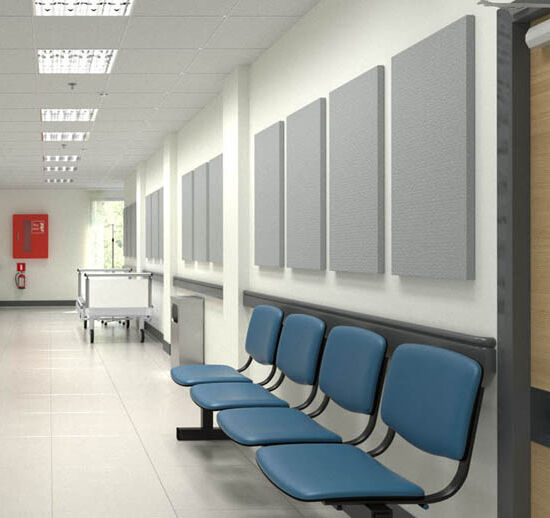Preparing for the Future of Healthcare
How Technology is Continuously Progressing in Our Healthcare Systems | June 17, 2024
It’s no secret that technology is changing at a rapid pace. It seems like every day there is a new software, social media platform, or robot that promises to make all of our lives easier. Knowing about these technologies is exciting, but to use them, integration must be possible.
To integrate new technology into existing facilities, we need to be cognizant of the spaces we are working with. Considering space for technology that hasn’t been invented yet is typically overlooked during the facility planning process.
The Future of IT/Telecom
While a lot of new technology can easily replace existing processes without taking over the space, it is imperative to keep potential progressions in mind when planning new facilities.
Let’s look at hospitals as a starting point. When you enter any medical facility it’s easy to tell that it has been planned down to the inch. So, what can the owners of these spaces do to work in cutting edge tech?
When designing for IT & telecom specifically, there are many standards that must be kept in mind – whether it is a new system that is taking shape or more “traditional” designs for a new facility.
Going digital will be monumental for healthcare facilities, giving patients the opportunity to easily access the best care wherever they may be located. “Although telecom tends to get overlooked, it’s the heart of the hospital,” mentioned Barcenas. “Technology in hospitals can only advance as far as our telecom solutions advance and it can only be as good as the cable or fiber feeding it.”
Connectivity starts with a great network system; all technology is connected through the cloud & the facility’s internet server.
Implementing mobile nurse stations and having patient information available from anywhere, allows doctors and nurses to receive real-time data across their healthcare network — which could be matter of life and death.
“Putting your information into a larger system that acts as a library, allows all doctors and nurses on the network to see the analytics leading them to discover the best solution—helping doctors cure you.”
The future of great telecom design doesn’t stop at network connectivity, upgrading current nurse call systems to better serve both patients and healthcare staff has taken the forefront of the discussion. Integrating technology that allows for video calls to pair with existing nurse call systems can reshape the hospital as a whole.
According to Barcenas, “Technology can increase productivity and conserve medical supplies like masks, gloves, and gowns, because every time a patient is pushing the nurse call button, [nurses] don’t have to gown up to check on the patient. They will just speak and jump on camera with you.”

“In order to maintain compatibility with how everything’s going digital, we’re having to ensure that we’re using the newest technology as far a cable types, in order to maintain the necessary speeds—pushing the standards of the time.”
Telecom systems can lend a hand to other technologies as well.
For specialized hospitals who often deal with high-risk patients, there are cleaning robots that can take over the task of sterilizing rooms that have been contaminated with airborne pathogens and highly contagious diseases. They can even be trained to disinfect and decontaminate operating rooms after surgical procedures.
Barcenas mentions, “Technology is a game changer; it’s changing everything in healthcare.” These spaces have the opportunity to transform in real time and give the public access to more information than ever before.
Integrating groundbreaking technology will give patients and families the confidence and surety that they are receiving the best possible care available to them.
The Future of Acoustics
When contemplating technology upgrades in a hospital, it’s essential to consider the impact on internal noise levels that the new tech may introduce.
With the healthcare environment, another major factor is privacy and Health Insurance Portability & Accountability Act (HIPAA) concerns.
BrightTree Studios’ Acoustical Consultant, Josh Thede, PE, LEED AP BD+C, WELL AP says, “When adding another layer of technology on top of everything else in a hospital, we want to make sure these details are reviewed and correct for sound isolation. Even cutting a hole in a wall can decrease the Sound Transmission Class (STC) rating by half, making it twice as loud.”
With the increasing availability of telehealth services from various providers, it’s crucial to have properly sound-proofed spaces for conducting these calls. Privacy is incredibly important in healthcare.
With the speed that telehealth was implemented throughout the COVID-19 pandemic, the location where providers were taking these calls fell to the wayside.
Thede notes, “Getting the diagnosis of what your doctor says is so critical. We don’t want doctors to have communication issues of mis-prescribing or misdiagnosing on the patient’s behalf due to the sound in the room.”
Another issue with the location of the telehealth phone calls, or just patient room acoustics in general revolves around HIPAA regulations.
HIPPA privacy standards apply to all healthcare locations, new construction, and renovations. Healthcare providers are required to provide privacy for patient health information.
While HIPPA does not give specific regulations for measuring acoustical privacy, rooms where confidential information is spoken should be equipped with the best sound absorption.
Appropriate partition placement, room finish specification, and sound masking system selection can be used to keep a patient’s health information from being heard by others.
Alongside keeping private conversations from leaking out of the designated telehealth space, it is also important to consider the external noises that may be coming into the room.
Ensuring that the provider and patient can focus during calls is incredibly important. The noise from HVAC systems, medical machines, or people in the waiting room can deflect that concentration.

Being mindful of external noise is important for in-person care as well. Extraneous noise can cause extra stress to patients who are trying to heal.
Thede mentions, “When adding more technology in a building, there’s more rack rooms and even the technology itself has fan noise, requires more cooling, which adds more electrical loads to a room, more air conditioning units, which add more transformers near patient rooms – all of this adds additional noise to the patient.”
“Anything we can do to help nurses and healthcare workers right now is at the top of mind.”
Working with the IT & telecom team, acoustics can help streamline the nurse call process. As it stands, most healthcare facilities have a specific sound that alerts nurses when a patient needs their assistance.
If we look to facilities that haven’t been built yet, designers are able to plan for the required STC rating by including an acoustician in the design process from the beginning.
These plans could entail placing quiet rooms far from spaces where frequent loud noises occur or choosing the best building materials for the desired sound levels.
It is also key to keep sound vibration in mind when designing a space. In addition to loudness, some of the necessary hospital machinery creates movement that could disturb operations and other technical care. Room placement for MRI, CAT scans, and procedural machines is vital in building planning.
“To be as innovative as possible and provide the best solutions, we want to be in from the very conceptual design,” Thede says. “Not considering space planning can start to introduce challenges from areas that aren’t necessarily in the scope boundaries of the project but could still dramatically affect what the end user experiences. It’s definitely possible to have this technology and no issues—it’s what we do. We push the envelope on design.”
Considering building acoustics is a process that can enhance the healthcare experience when done correctly. It is much easier to plan and troubleshoot before a space has been constructed, rather than building out a whole facility.
From ensuring privacy, to keeping the healing environment free from distractions, building acoustics in a hospital experience should be a priority. In the ever-evolving landscape of healthcare technology, acoustics remains a critical factor in shaping the hospital experience.
For more acoustics insights, check out an article from our Acoustics Discipline Lead about LEED Documentation.





